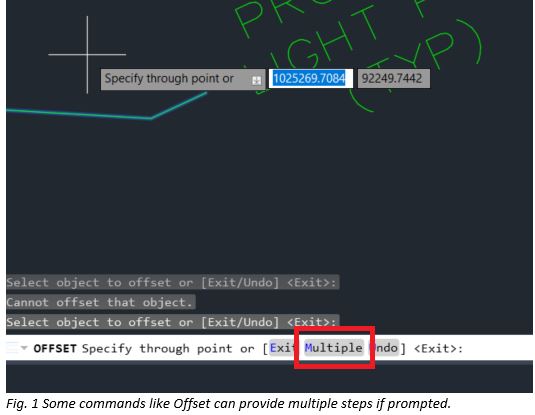
Introduction:
AutoCAD, the cornerstone of computer-aided design (CAD), continues to empower architects, engineers, and designers with a multitude of tools designed to enhance efficiency and precision. Among these tools, the “MULTIPLE” command stands out as a powerful feature, offering a versatile approach to the creation and manipulation of multiple objects within the drawing environment. This extensive article delves into the intricacies of the MULTIPLE command in AutoCAD, exploring its functionalities, applications, and the transformative impact it has on streamlining complex design tasks.
Understanding the MULTIPLE Command in AutoCAD:
The MULTIPLE command in AutoCAD is a dynamic tool that allows users to perform operations on multiple objects simultaneously. This feature simplifies and accelerates the design process by enabling users to apply commands, modifications, or manipulations to a selection of objects collectively, rather than individually. Whether creating, editing, or managing elements within a drawing, the MULTIPLE command provides a unified and efficient approach to handling multiple objects.
Key Features and Functionalities:
- Simultaneous Editing and Modification: The core functionality of the MULTIPLE command lies in its ability to perform edits and modifications on multiple objects at once. This includes commands such as move, copy, rotate, scale, and various other editing operations.
- Selection Flexibility: The MULTIPLE command allows users to select objects using various methods, including window selection, crossing selection, or individual object selection. This flexibility ensures that users can easily specify the group of objects on which they intend to perform operations.
- Consistent Application of Commands: One of the key advantages of the MULTIPLE command is its ability to apply commands consistently across a selected group of objects. This ensures uniformity in design modifications, preventing discrepancies and errors in the final drawing.
- Dynamic Preview and Feedback: When using the MULTIPLE command, AutoCAD provides a dynamic preview and feedback system. Users can visually assess the impact of the intended modification on the selected objects before confirming the command, enhancing the overall control and accuracy of the design process.
Applications of the MULTIPLE Command:
- Array Operations: The MULTIPLE command is particularly useful when creating arrays of objects. Whether creating linear arrays, rectangular arrays, or polar arrays, users can apply the MULTIPLE command to efficiently duplicate and arrange objects in a controlled manner.
- Global Attribute Editing: In drawings containing attributes, the MULTIPLE command streamlines the editing process. Designers can globally modify attribute values across a selection of objects, ensuring consistency in annotations, labels, or any other attributed elements.
- Layer Management: When working with drawings involving multiple layers, the MULTIPLE command facilitates layer management. Users can efficiently change the layer assignment of a selection of objects, ensuring proper organization and adherence to drawing standards.
- Text and Dimension Adjustments: The MULTIPLE command proves beneficial when adjusting text or dimensions in a drawing. Designers can select and modify multiple text elements or dimensions simultaneously, saving time and ensuring consistency in formatting.
Optimizing Workflow with the MULTIPLE Command:
- Understanding Command Options: Familiarize yourself with the various options available within the MULTIPLE command. AutoCAD provides a range of options, including selecting objects, specifying a base point, and applying transformations, each tailored to specific design tasks.
- Utilizing Filters and Selection Sets: Filters and selection sets complement the MULTIPLE command by allowing users to define specific criteria for object selection. By using filters or creating selection sets, designers can refine their object selections and apply the MULTIPLE command more selectively.
- Incorporating Dynamic Blocks: For users working with dynamic blocks, the MULTIPLE command offers a powerful means of manipulating block instances. Designers can select multiple instances and apply modifications, providing a dynamic and efficient approach to working with parametric designs.
- Customizing Multifunctional Scripts: AutoCAD’s scripting capabilities allow users to create multifunctional scripts that incorporate the MULTIPLE command. By scripting common tasks, designers can further automate their workflows and enhance productivity in handling multiple objects.
Conclusion:
In conclusion, the MULTIPLE command in AutoCAD is a cornerstone feature that significantly contributes to the efficiency and precision of the design process. Its ability to streamline operations on multiple objects simultaneously reflects AutoCAD’s commitment to providing tools that empower users in handling complex design tasks. As AutoCAD continues to evolve, the MULTIPLE command remains a vital asset for architects, engineers, and designers seeking a unified and efficient approach to working with multiple objects within the CAD environment. Embrace the power of the MULTIPLE command, and witness the transformation of your AutoCAD experience into a seamless journey of efficiency, precision, and creative exploration within the vast landscape of CAD design.